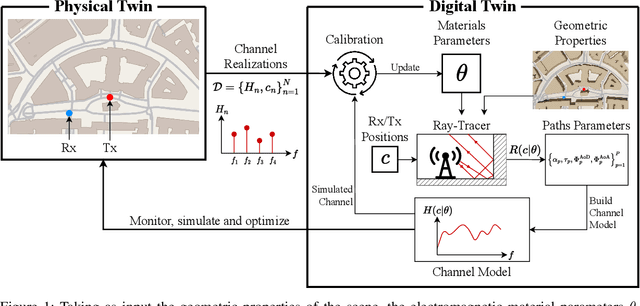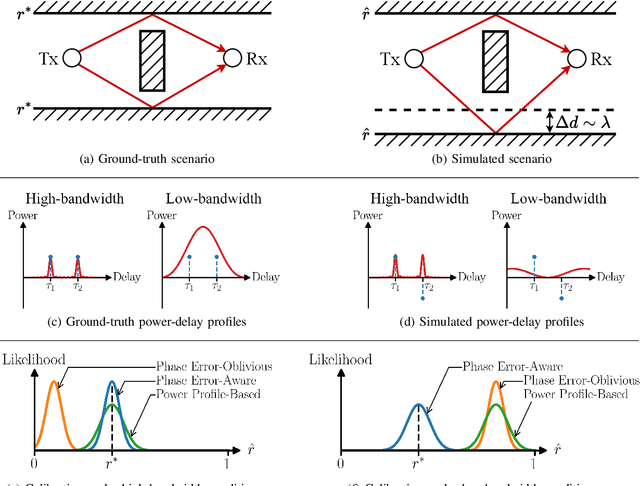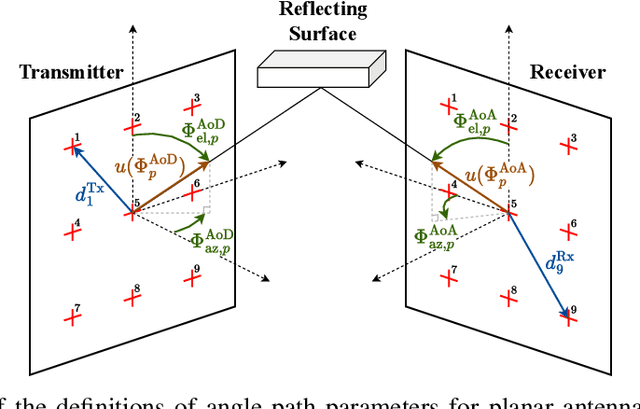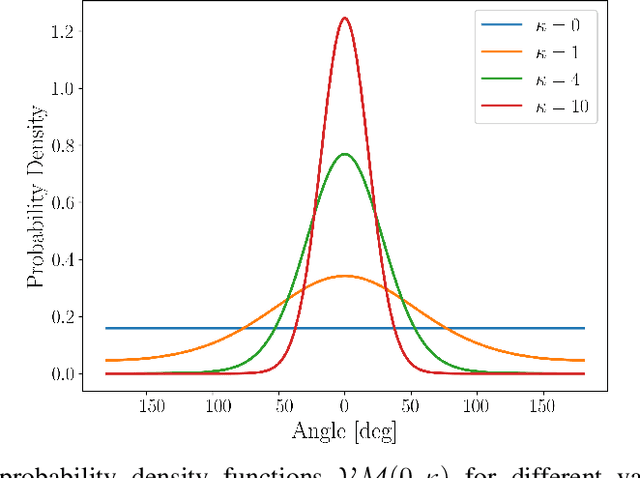Clement Ruah
Context-Aware Doubly-Robust Semi-Supervised Learning
Feb 21, 2025Abstract:The widespread adoption of artificial intelligence (AI) in next-generation communication systems is challenged by the heterogeneity of traffic and network conditions, which call for the use of highly contextual, site-specific, data. A promising solution is to rely not only on real-world data, but also on synthetic pseudo-data generated by a network digital twin (NDT). However, the effectiveness of this approach hinges on the accuracy of the NDT, which can vary widely across different contexts. To address this problem, this paper introduces context-aware doubly-robust (CDR) learning, a novel semi-supervised scheme that adapts its reliance on the pseudo-data to the different levels of fidelity of the NDT across contexts. CDR is evaluated on the task of downlink beamforming, showing superior performance compared to previous state-of-the-art semi-supervised approaches.
Calibrating Wireless Ray Tracing for Digital Twinning using Local Phase Error Estimates
Dec 19, 2023



Abstract:Embodying the principle of simulation intelligence, digital twin (DT) systems construct and maintain a high-fidelity virtual model of a physical system. This paper focuses on ray tracing (RT), which is widely seen as an enabling technology for DTs of the radio access network (RAN) segment of next-generation disaggregated wireless systems. RT makes it possible to simulate channel conditions, enabling data augmentation and prediction-based transmission. However, the effectiveness of RT hinges on the adaptation of the electromagnetic properties assumed by the RT to actual channel conditions, a process known as calibration. The main challenge of RT calibration is the fact that small discrepancies in the geometric model fed to the RT software hinder the accuracy of the predicted phases of the simulated propagation paths. Existing solutions to this problem either rely on the channel power profile, hence disregarding phase information, or they operate on the channel responses by assuming the simulated phases to be sufficiently accurate for calibration. This paper proposes a novel channel response-based scheme that, unlike the state of the art, estimates and compensates for the phase errors in the RT-generated channel responses. The proposed approach builds on the variational expectation maximization algorithm with a flexible choice of the prior phase-error distribution that bridges between a deterministic model with no phase errors and a stochastic model with uniform phase errors. The algorithm is computationally efficient, and is demonstrated, by leveraging the open-source differentiable RT software available within the Sionna library, to outperform existing methods in terms of the accuracy of RT predictions.
A Bayesian Framework for Digital Twin-Based Control, Monitoring, and Data Collection in Wireless Systems
Dec 02, 2022Abstract:Commonly adopted in the manufacturing and aerospace sectors, digital twin (DT) platforms are increasingly seen as a promising paradigm to control, monitor, and analyze software-based, "open", communication systems. Notably, DT platforms provide a sandbox in which to test artificial intelligence (AI) solutions for communication systems, potentially reducing the need to collect data and test algorithms in the field, i.e., on the physical twin (PT). A key challenge in the deployment of DT systems is to ensure that virtual control optimization, monitoring, and analysis at the DT are safe and reliable, avoiding incorrect decisions caused by "model exploitation". To address this challenge, this paper presents a general Bayesian framework with the aim of quantifying and accounting for model uncertainty at the DT that is caused by limitations in the amount and quality of data available at the DT from the PT. In the proposed framework, the DT builds a Bayesian model of the communication system, which is leveraged to enable core DT functionalities such as control via multi-agent reinforcement learning (MARL), monitoring of the PT for anomaly detection, prediction, data-collection optimization, and counterfactual analysis. To exemplify the application of the proposed framework, we specifically investigate a case-study system encompassing multiple sensing devices that report to a common receiver. Experimental results validate the effectiveness of the proposed Bayesian framework as compared to standard frequentist model-based solutions.
Digital Twin-Based Multiple Access Optimization and Monitoring via Model-Driven Bayesian Learning
Oct 11, 2022



Abstract:Commonly adopted in the manufacturing and aerospace sectors, digital twin (DT) platforms are increasingly seen as a promising paradigm to control and monitor software-based, "open", communication systems, which play the role of the physical twin (PT). In the general framework presented in this work, the DT builds a Bayesian model of the communication system, which is leveraged to enable core DT functionalities such as control via multi-agent reinforcement learning (MARL) and monitoring of the PT for anomaly detection. We specifically investigate the application of the proposed framework to a simple case-study system encompassing multiple sensing devices that report to a common receiver. The Bayesian model trained at the DT has the key advantage of capturing epistemic uncertainty regarding the communication system, e.g., regarding current traffic conditions, which arise from limited PT-to-DT data transfer. Experimental results validate the effectiveness of the proposed Bayesian framework as compared to standard frequentist model-based solutions.
 Add to Chrome
Add to Chrome Add to Firefox
Add to Firefox Add to Edge
Add to Edge